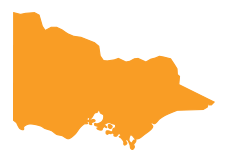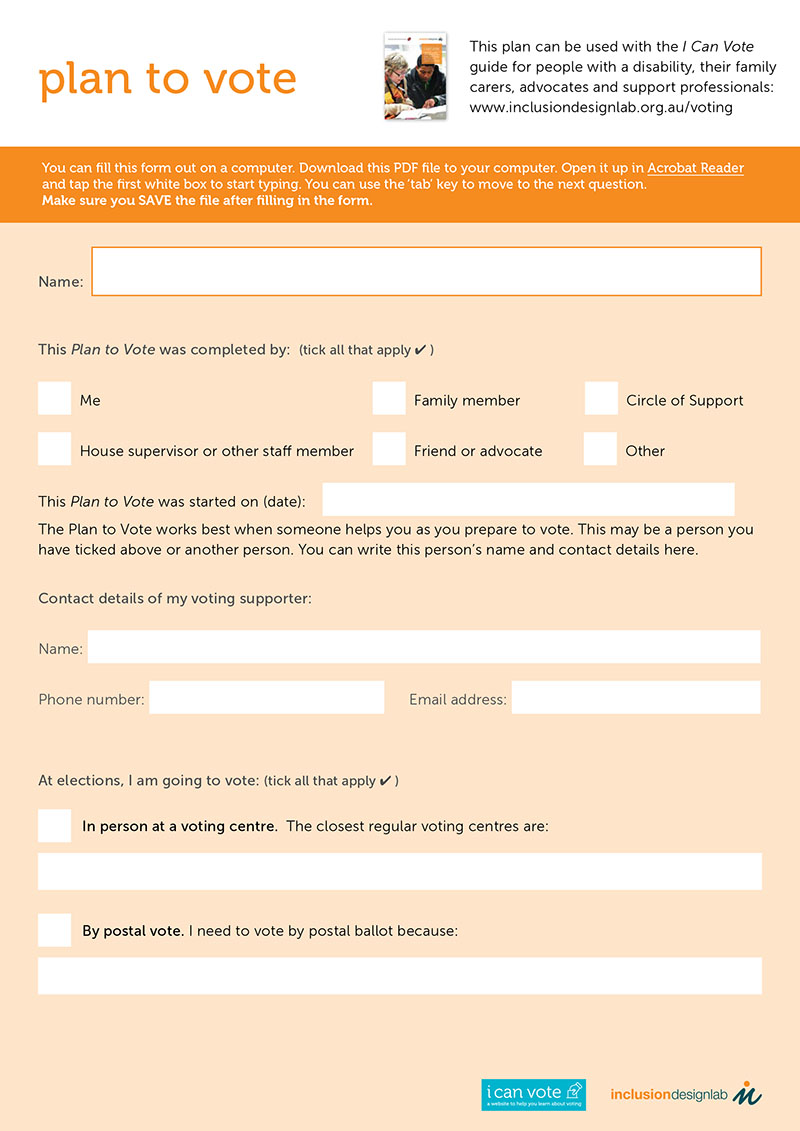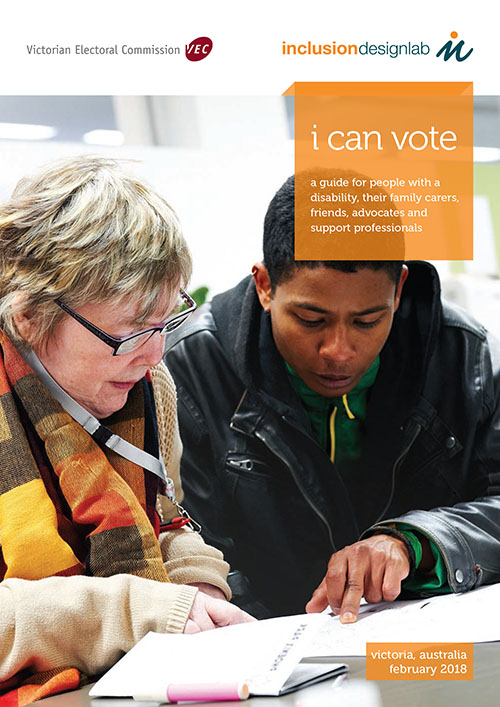This page is about enrolling to vote and learning about candidates.
You can ask for help to get ready to vote.
Enrolling to vote
Elections tell us who will run or govern your local area, your state, and your country. A group called an electoral commission makes sure that elections are fair. Electoral commissions also manage elections and tell us the results of elections. The Victorian Electoral Commission – or VEC – has a list called the electoral roll. The electoral roll lists all of the people who are able to vote in an election. This includes you!
If you are over 18 years old, you need to make sure that your name and personal details are on the electoral roll.
Here's what you need to do to make sure that you are on the roll:
2
Click the Check Enrolment button or go to check.aec.gov.au. Fill out the form on the website. You need to type in your name, your middle names, and your last name. You also need to type in your date of birth, your suburb, and your street name. If you need help, ask a family member, friend or support worker to help you.
3
If your name is on the list, that’s great! It means you are enrolled to vote. You may need to change your address. Go to aec.gov.au and click the Change Address button. Follow the instructions or ask someone to help you.
4
If your name is not on the list, you will need to fill out the form to enrol.
Enrolling for the first time
If you are not enrolled to vote, visit aec.gov.au/enrol. Click the Enrol Online button. You can ask someone to help you do this too!
You will now be at a page with lots of information and options. You can fill out the form yourself. You can also ask someone to help you.
You need to enter your name, date of birth, and address. You also need to prove that you are allowed to vote. The easiest way is to have another voter support you. You can enter their details into the form.
When you have completed the form properly, click the Submit button. You will receive a letter about two weeks later letting you know that you are enrolled to vote.
Congratulations! You are now enrolled to vote.
Electorate
Your electorate has a name. If you do not know the name of the local, state or federal electorate you live in, you can go to these websites:
You can also ask a family member, friend or support worker to help you. The name of your state electorate will often be the name of a suburb or town near you. Your federal electorate will have a different name.
Once you are enrolled and you know the name of your electorate and you know the date of an election, it is time to get ready to vote!
Getting help with voting
The next part of this website is about how to vote in elections. There is lots to learn! Don't be afraid - you can get help!
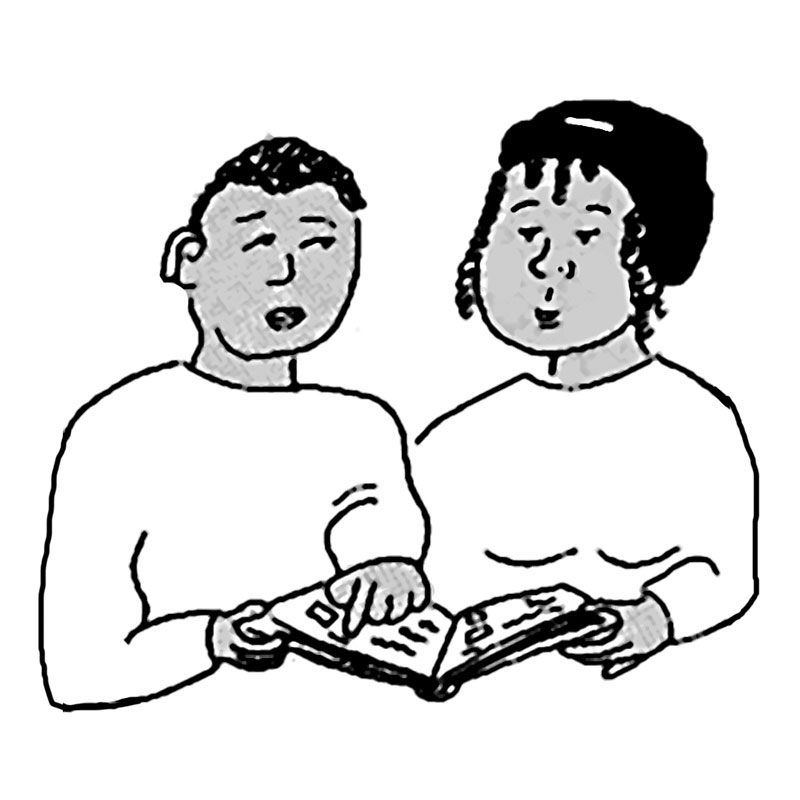
You can get help to learn about politics.
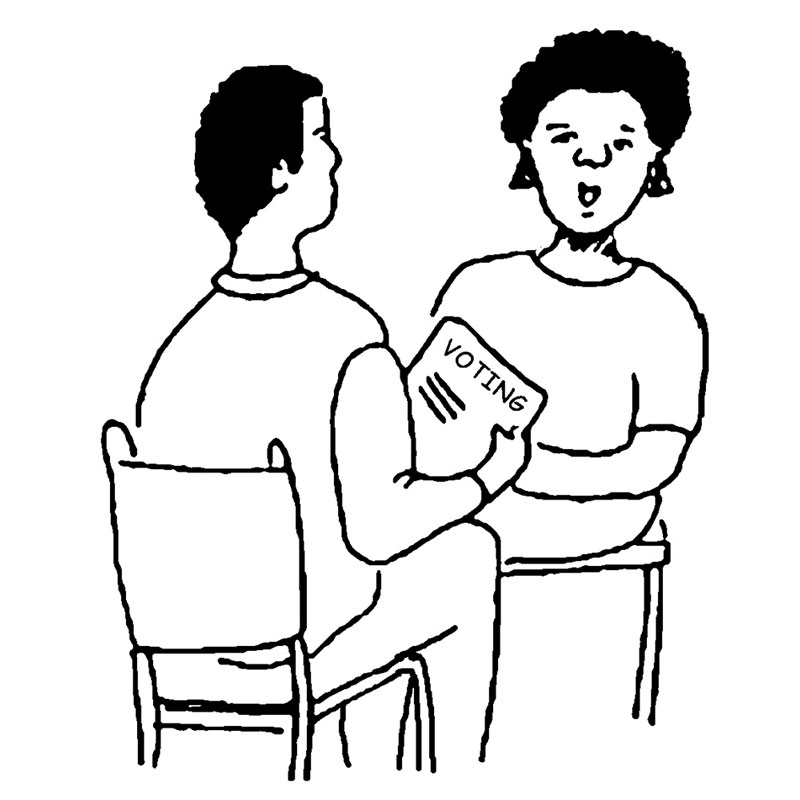
You can get help to learn about voting.
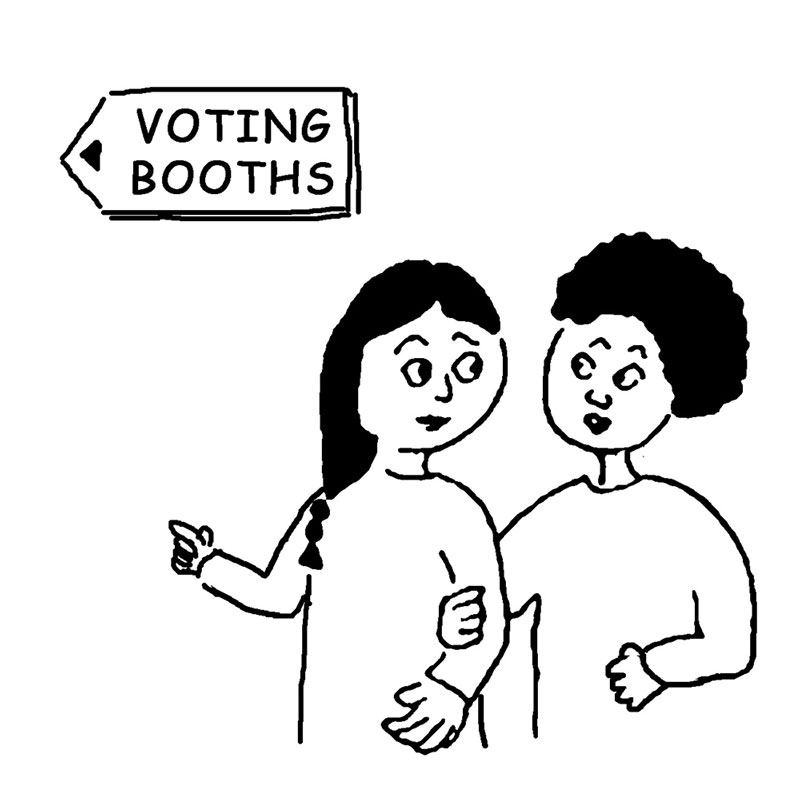
You can get help to vote on election day.
Talking about politics
Learning about political parties can be a lot of work!
Knowing what a candidate plans to do can help you decide if you want to vote for them or not. There are many ways you can learn about each candidate’s policies.
- You can look at the pamphlets that candidates send out when there is an election coming up.
- You can go to each candidate’s website and see what they say about the election.
- You can go to their Facebook page to see what they say and what their supporters say.
- You can also find out what candidates are saying by reading the newspaper, listening to the radio, or watching the news and television. Politics and political parties are in the news almost every day!
- You can even write to your local candidate and ask them questions. You could ask your local candidate “What are you going to do about the environment?” or “What are you going to do to make my community more accessible for people with a disability?”
- You can watch the videos on this website in Meet the politicians.
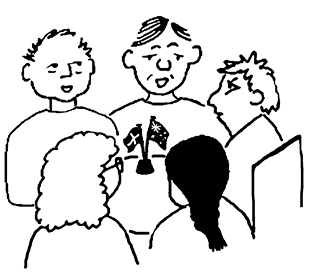
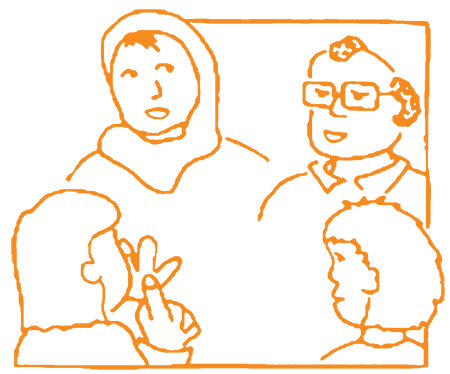
Talking about politics and political parties with a group of people can make it easier.
You can form a group of people to help you discuss politics. 4 or 5 people would be a great group size. You can meet once every month and talk about what you have been learning. You could also watch online videos together or read pamphlets from political parties together.
Planning to vote
It is really important that you take time to learn about voting. You don’t have to rush. The best way to make sure you get all the help you need is to plan.
Planning to vote means working out who is going to help you:
- learn about politics
- learn about political candidates
- learn about voting
- get to the polling station on election day
You can write out a list of these things and put the list on your wall or your fridge. You could give it to a friend, family members or supporter to look after it if you want. You could ask your Circle of Support to help you if you have a Circle. It’s your choice. Ask one of these people to remind you to follow your plan.
Election day
Scroll down to read about the different parts of voting day.
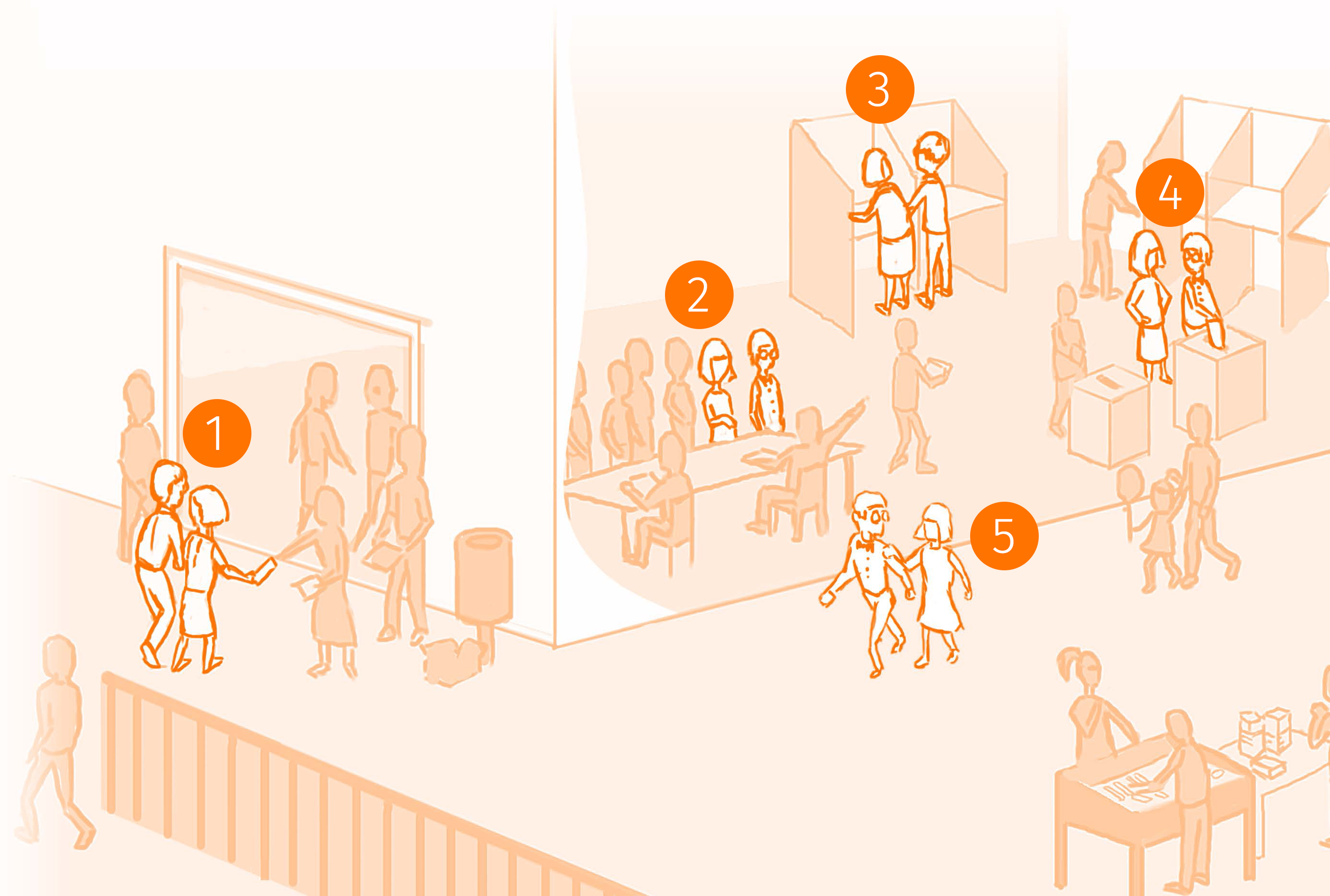
1
Welcome to the voting centre! When you arrive to vote, there may be a lot of other people waiting to vote. You might have to wait in a line to vote.
If you need help, you can ask an election official for help. There are election officials at voting centres during every State and local council election.
Election officials wear a badge or a vest.
2
A VEC staff member will ask for your name and address. They will also ask if you have already voted somewhere else for this election.
They will make sure you are voting in the right electorate. They will mark your name on the electoral roll to show that you have voted. They will hand you the voting papers, also called ballot papers.
3
An election official will tell you to go to one of the voting booths set up around the room. These are set up so that no-one else can see who you are voting for. Go into the voting booth then write on your ballot papers using numbers only. You can ask a friend or election official to help you.
4
When you have written on the ballot papers, you must place these in a special ballot box. An election official will show you how to do this.
5
You have now finished at the voting centre. You can choose how you want to celebrate. Some people have a meal with friends. Other people watch the news about the election on TV in the evening. It’s your choice!
What happens if you don’t vote?
People who are enrolled to vote must vote. This includes you! This is the law. If you do not vote, you will get a letter in the mail. The letter will ask you to explain why you did not vote. If you do not have a good reason then you will get a fine. This means you will have to pay money to the government.
If you have a good reason for not voting, you can call the Victorian Electoral Commission and tell them. Here are some good reasons:
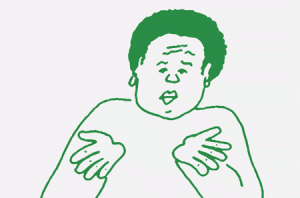
Some reasons are not good reasons. You will get a fine. For example:
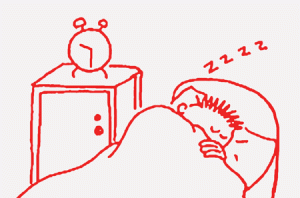
If you get a fine, ask a family member, support worker or friend to support you to pay the fine.

